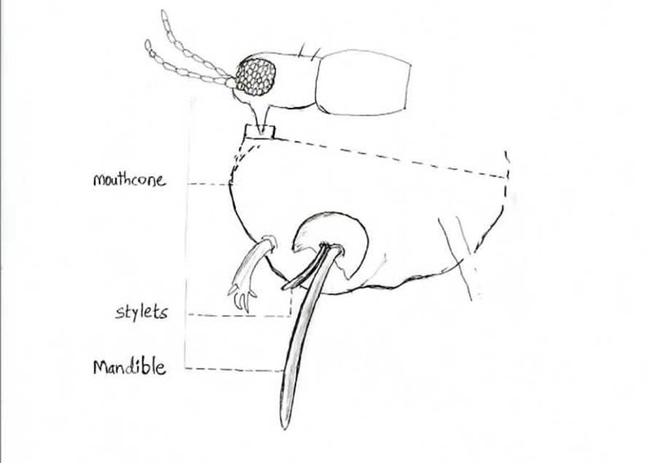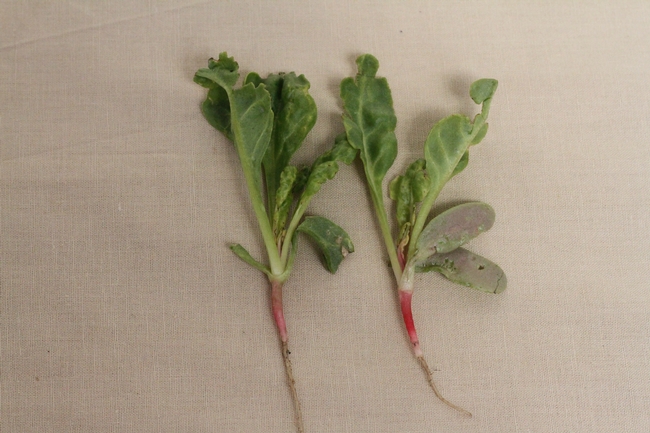Among several species of thrips that invade vegetable crops, western flower thrips [Frankliniella occidentalis (Fig. 1)] is the most destructive species of thrips in the Salinas Valley. They can cause severe feeding injury to all stages of plant development. Early feeding can cause severe stunting or reduce plant development whereas; late feeding can cause visible feeding patches - affecting marketable yield in both the instances. Severe feeding injury is usually associated with very high populations of thrips on the crop. It is likely that recent early surge in thrips populations in the Salinas Valley is related to warmer (high day temperatures) and dry winter.
Thrips is a tiny insect (less than 3 millimeters) and prefers to stay and feed within tight protected areas of the plant such as, between veins or near mid-rib or within the layers or stacks of lettuce leaves or celery stems. Thus, thrips injury was detected in those tight areas of the plant. It is likely that colonizing at those tight areas provide protection from insecticide sprays.
Thrips has a “piercing-sucking” or “punch and suck” mouthpart. Mouthpart of thrips is referred as mouthcone (Fig. 2). Thrips typically feeds using two structures of its mouthcone: (1) a mandible and (2) stylets. As illustrated in the Figure 2, thrips uses the mandible to pierce or punch the plant cell wall and stylets (or needles), which often form a single tube, sucks the liquid food from the plant cell. This feeding apparatus allows thrips to feed on liquid food on a surface or within a plant cell.
As indicated, thrips can cause significant crop loss once its population increases to very high levels. Thrips injury on lettuce may appear as brown streaks, or scarring on the leaves (Fig. 3). If examined closely using magnifying glass, it appears like punctured plant cells and the content removed (Figs. 4 and 5). On celery, the thrips feeding injury is similar but the injured cells appear as raised ridges (Fig. 6). When attacked at the younger stages of the plant development, for e.g., on the growing tips of the cotyledons (Fig. 7), the feeding could deform the true leaves that develop later (Fig. 8).
In addition to feeding injury, western flower thrips are able of transmiting plants viruses (tospoviruses) such as Impatiens Necrotic Spot Virus (INSV) and Tomato Spotted Wilt Virus (TSWV). In the family: Thripidae, there are 1710 species of thrips but only 14 thrips species are currently reported to transmit tospoviruses. Both larval and adult stages of thrips vectors actively feed on the host plants but only early larval instars can acquire tospoviruses and later instar larvae and adults can transmit tospoviruses after a latent period. Adult thrips can acquire tospoviruses, but they do not transmit them because virus could not multiply to sufficient numbers. Also, tospoviruses are not transmitted when the thrips lay eggs into the plant. Thus, each new generation of thrips vectors must acquire the virus as larvae. The weed plants outside the field can be the reservoir for tospoviruses and when the larvae feed on them, they acquire the virus. In the field, larvae feeding on the tospoviruses-infected lettuce plants may also aid virus acquisition. The thrips carrying the virus just need to feed for 10-15 minutes to transmit the virus to uninfected plants.
Typically, bean-shaped eggs are inserted by female western flower thrips into the leaf. Within 5 days, eggs hatch to first instars. If the temperature stays at 86ºF, first instars molt into second instars. This can happen in couple of days in the Salinas Valley. Second instars develop into prepupae within 4-5 days. Most of the prepupae drop to the soil and emerge into adults within 3 days at 86ºF. Pupal stage is the only non-destructive stage of the thrips. Clearly, thrips development is associated to temperature. Adult females lay about 50 eggs and can live up to 4-5 weeks at 86ºF. So, in Salinas Valley due to milder temperature range, western flower thrips may live longer than 5 weeks. Western flower thrips requires a minimum 194 degree days (DD) (min. temp. 49.5oF) to complete a generation, but has been estimated to be as high as 254 DD with a minimum temperature of 43.7oF. Western flower thrips can lay eggs with and without mating. The mated female thrips (fertilized) tend to produce more female offsprings than males whereas, unmated female thrips tend to produce more male offsprings than females.
Thrips are weak flyers but they have fringed wings which help them to get airborne and glide short and long distances. Thrips can stay airborne for about 24 hours in the cooler conditions and can remain without feeding and drinking. They get quickly desiccated if they stay longer in the air. The dispersal of thrips is largely depending on temperature, light, and wind.
To prevent direct feeding injury and viral transmission, it is important that we manage thrips on the crops using the tools such as targeted insecticide sprays. Recent insecticide efficacy studies against western flower thripssuggested that insecticides such as Radiant, Entrust, Lannate, Exirel and Beleaf have decent activity against western flower thrips. Other products, Gladiator and Torac are effective but are not registered for use. Please read the Monterey County crop note (May edition) for details on insecticide efficacy trials. It is important that the growers restrain from repeated use of insecticides within same IRAC class (http://www.irac-online.org/documents/moa-classification/?ext=pdf) in a given season instead rotate insecticides with distinctly different modes of action to reduce development of resistance.
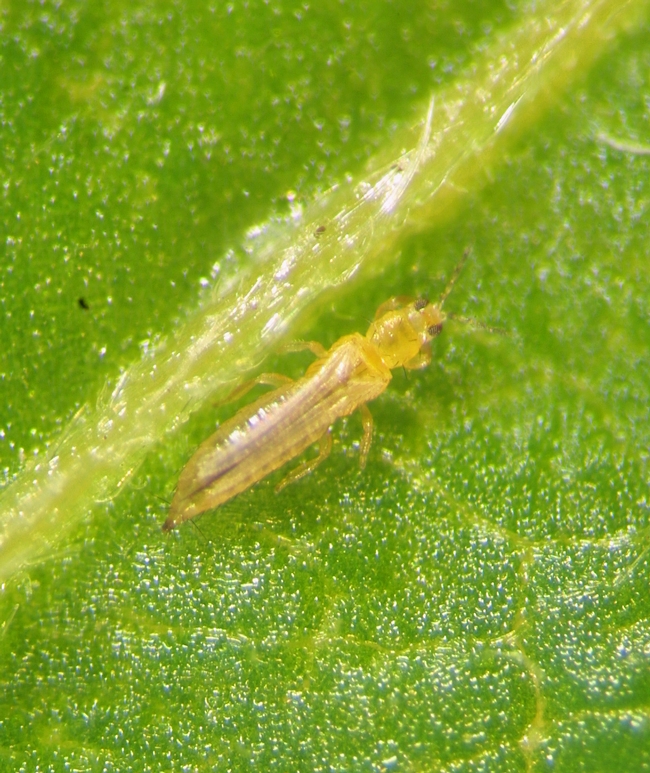
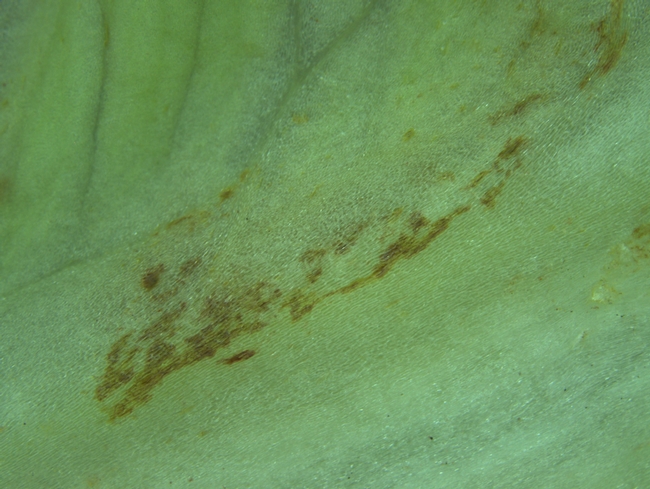
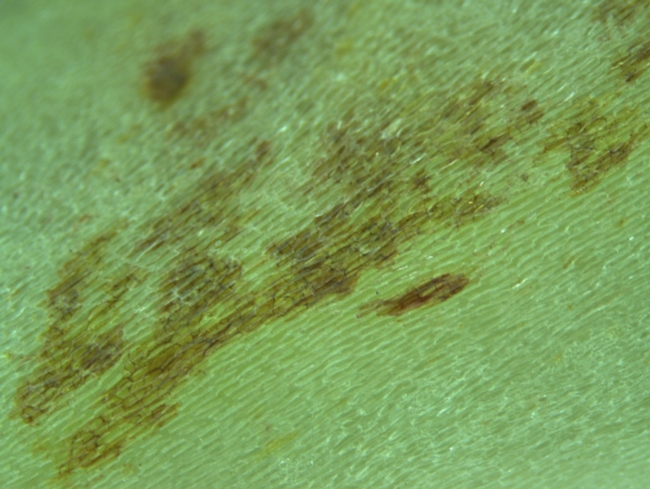
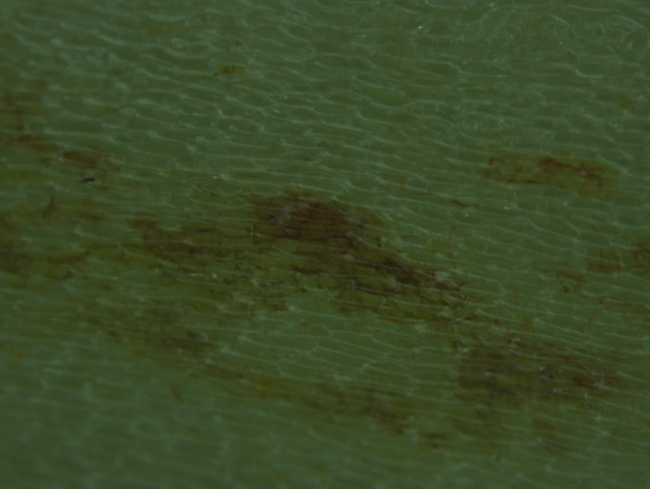
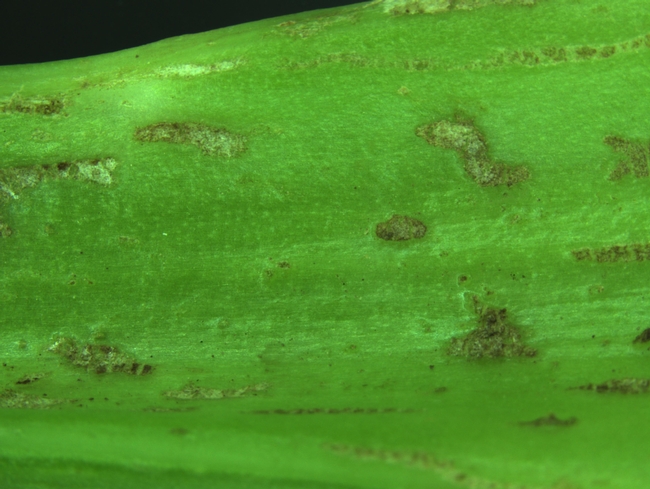

Attached Images:
